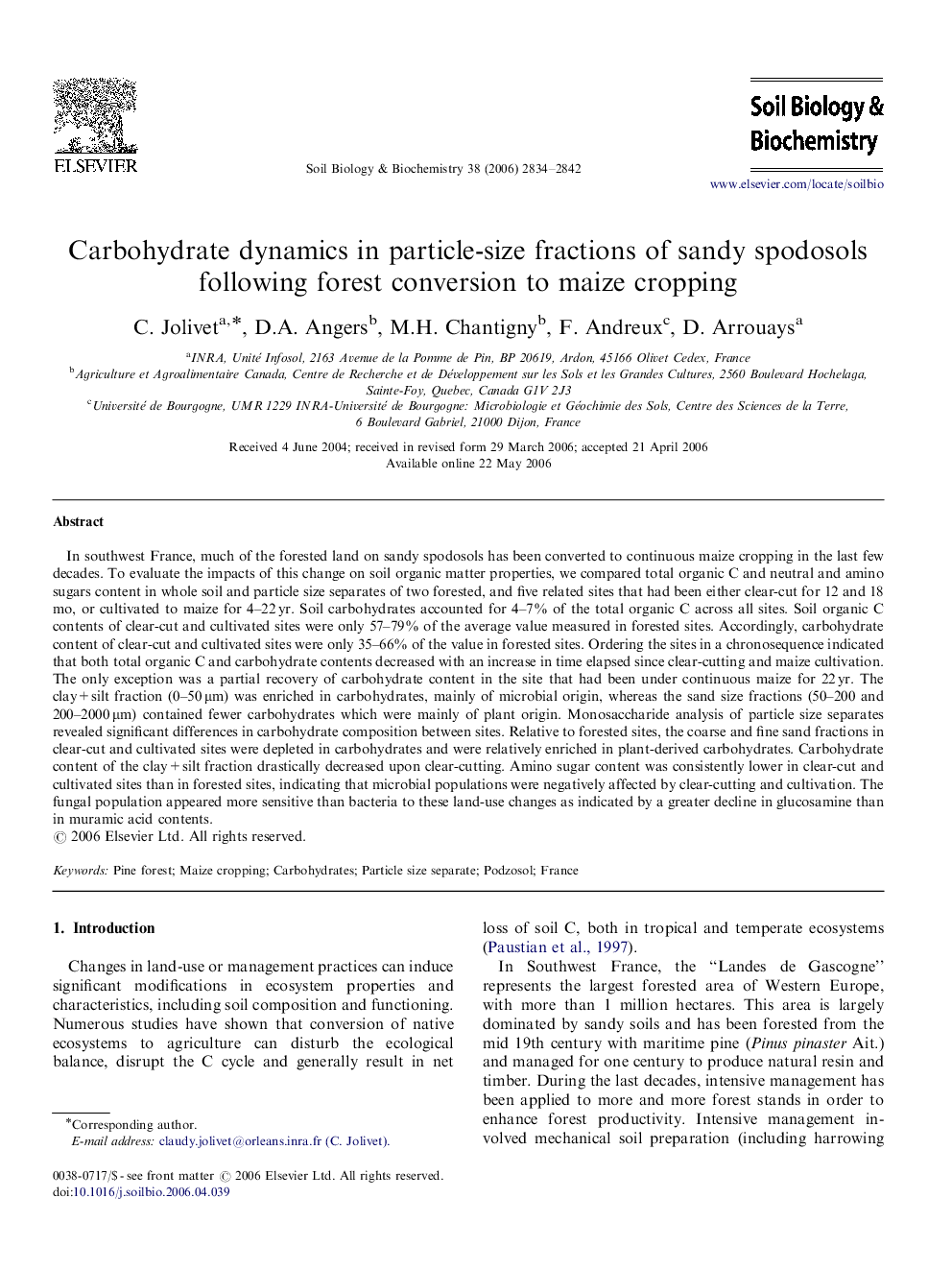| Article ID | Journal | Published Year | Pages | File Type |
|---|---|---|---|---|
| 2027136 | Soil Biology and Biochemistry | 2006 | 9 Pages |
In southwest France, much of the forested land on sandy spodosols has been converted to continuous maize cropping in the last few decades. To evaluate the impacts of this change on soil organic matter properties, we compared total organic C and neutral and amino sugars content in whole soil and particle size separates of two forested, and five related sites that had been either clear-cut for 12 and 18 mo, or cultivated to maize for 4–22 yr. Soil carbohydrates accounted for 4–7% of the total organic C across all sites. Soil organic C contents of clear-cut and cultivated sites were only 57–79% of the average value measured in forested sites. Accordingly, carbohydrate content of clear-cut and cultivated sites were only 35–66% of the value in forested sites. Ordering the sites in a chronosequence indicated that both total organic C and carbohydrate contents decreased with an increase in time elapsed since clear-cutting and maize cultivation. The only exception was a partial recovery of carbohydrate content in the site that had been under continuous maize for 22 yr. The clay+silt fraction (0–50 μm) was enriched in carbohydrates, mainly of microbial origin, whereas the sand size fractions (50–200 and 200–2000 μm) contained fewer carbohydrates which were mainly of plant origin. Monosaccharide analysis of particle size separates revealed significant differences in carbohydrate composition between sites. Relative to forested sites, the coarse and fine sand fractions in clear-cut and cultivated sites were depleted in carbohydrates and were relatively enriched in plant-derived carbohydrates. Carbohydrate content of the clay+silt fraction drastically decreased upon clear-cutting. Amino sugar content was consistently lower in clear-cut and cultivated sites than in forested sites, indicating that microbial populations were negatively affected by clear-cutting and cultivation. The fungal population appeared more sensitive than bacteria to these land-use changes as indicated by a greater decline in glucosamine than in muramic acid contents.
